The art of choosing a chicken breed

Six things you’ll need to consider to pick the right chooks for your coop.
Words: Andrea Graves
It’s easy to feel like a kid in a candy shop when you’re at a place like Hamilton Heritage Hens. From the decorative plumage of silver-laced Wyandottes to iridescent-feathered Orpingtons that seem to be wearing Victorian petticoats, the place is a visual feast of avian finery. Each pen features several hens plus a regal rooster who parades his comb and wattle as if they were crown and sceptre.
The breeding business sells ten heritage breeds plus the modern Hy-Line. But with so much feathered goodness around, how does a chicken buyer choose what to take home with them? There is no easy answer, but several factors can guide your choice.
1. BEAUTY
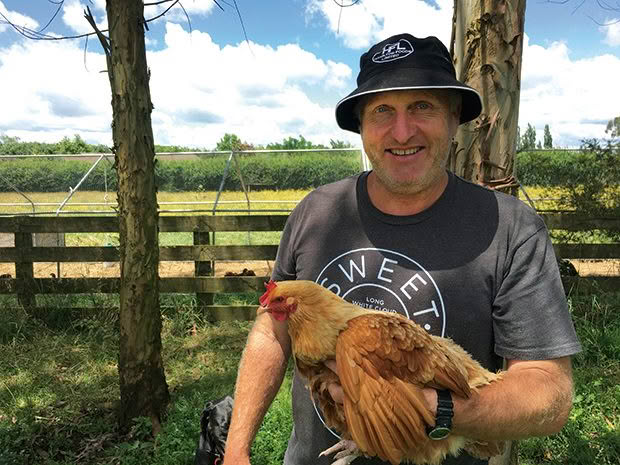
Owen Pratt, owner of Hamilton Heritage Hens says the beauty of hens is often their biggest drawcard.
According to Owen Pratt, owner of Hamilton Heritage Hens, some people care mostly about how beautiful their chickens are and consider eggs as a secondary bonus. The heritage varieties he breeds and sells each wear their own distinct outfit of feathers, and Orpingtons and Barred Plymouth Rocks are the most popular. If beauty is your priority, the choice is mostly a matter of personal taste, although some breeds have been selected for traits such as cold-hardiness – these tend to have profuse feathering and smaller combs. They all lay eggs, too, of course: heritage breeds lay roughly the same number of eggs as a Hy-Line or brown shaver, says Pratt, but those eggs are spread out over five or six years – as opposed to the three years with the modern breeds – before the hen settles into her elderly years and lays less frequently.
2. ABUNDANT EGGS

Barnevelder – an old Dutch breed – are less likely to go broody.
Owen has noticed more people becoming interested in a breed’s egg production because of the recent increase in egg price and egg shortage. The standard hybrid commercial laying chook – Hy-Line or brown shaver – packs most of her laying into eighteen months to two years. While she might stay healthy for longer than that, the frequency and quality of her eggs become very patchy. But in the first year especially, after the birds hit puberty at around 20 weeks old, an egg almost every day of the year is what you can expect.
The season matters, though: in early to mid-winter, the short days mean youngsters may be a bit slower to commence laying – commercial chook houses have controlled lighting, so the season is less important.
Heritage breeds have longer juvenile periods and begin laying after 26 to 30 weeks of age. But they rarely lay over winter. When the days grow longer in mid-July and August, they begin or resume laying, depending on their age.
3. BROODINESS
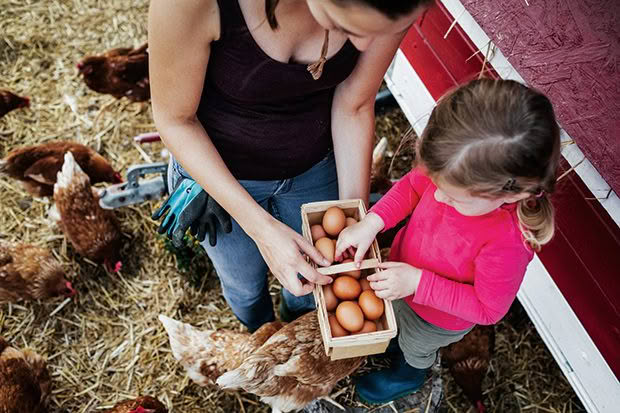
Heritage breeds, however, are more prone to go broody. This trait, which involves a periodic steely determination to sit on eggs, can be annoying. A broody hen ceases to lay, and hardly eats and drinks, which can cause her to lose weight. If the eggs aren’t fertile and therefore don’t hatch after the usual three-week period, this behaviour can continue for a long time. While it’s possible to “break” broodiness, this habit can return repeatedly.
Not all heritage hens go broody, and there’s significant variation between individuals that can be difficult to predict. Owen advises that Barnevelders, an old Dutch breed, are less likely to go broody than many heritage breeds and are decent layers as well. New Hampshire Red’s are another breed that will lay well yet are less likely to go broody. Silkies, on the other hand, are notoriously prone to going broody – but they are extremely pretty.
People wanting to hatch and raise chicks may be pleased to have a broody hen. If there’s no rooster in attendance, fertile eggs can be brought in to put under her.
4. PRICE
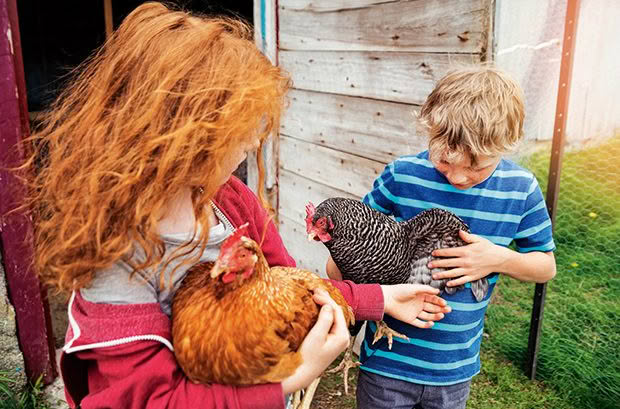
You’re not likely to find heritage breeds from the same commercial hatcheries that produce Hy-Lines and brown shavers en masse. These typically come from small-scale breeders like Owen or someone’s backyard.
They’re more expensive for that reason, fetching upwards of $50 for a pullet, whereas modern hybrids can be found for around $40 each at the point of lay. Owen doesn’t breed his Hy-Lines but buys female chicks from a hatchery when he can get hold of them, and he gives them a free-range upbringing. Pullets become more expensive as they reach their point-of-lay age, simply because they have been fed for longer – and feed is usually the biggest cost. Buying them earlier and cheaper, however, means you’ll have to wait longer for eggs.
5. MEAT
Heavy heritage breeds such as Plymouth Rock, Wyandotte, Rhode Island Red and Orpingtons are far fleshier than modern hybrids and are therefore often considered “dual purpose” birds: they lay eggs and can be a source of meat as well. Roosters, of course, provide only meat, but many of Owen’s roosters are bought by ethnic communities who prefer the distinct taste and texture of a slow-grown chook over supermarket chicken flesh. He sells some roosters to people in rural settings who want a bloke for their hens.
6. PERSONALITY
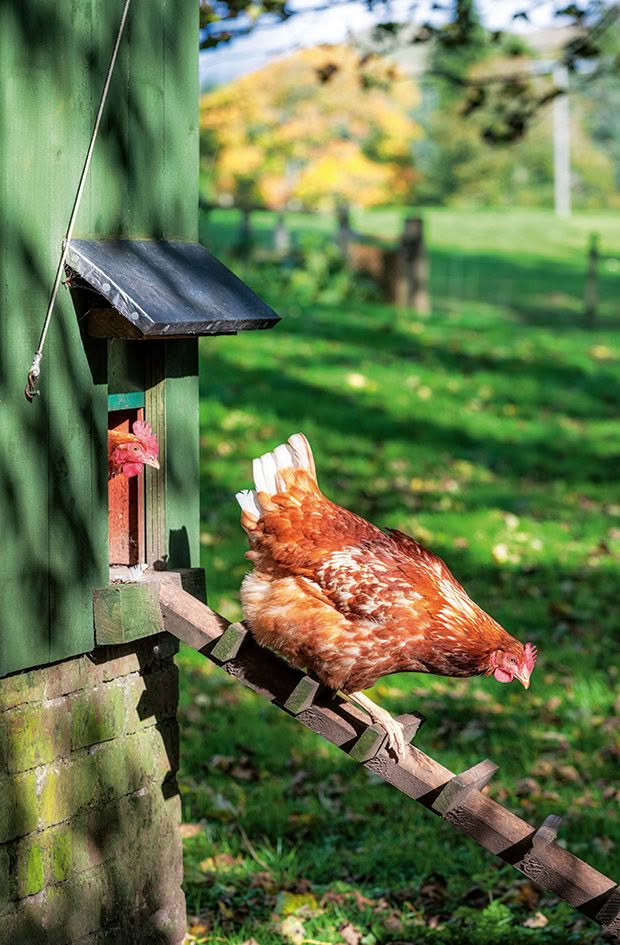
Rhode Island Reds are classic dual purpose breeds.
All the heavy heritage breeds tend to be docile and easily contained by fences, although some breeders sell lighter, flightier breeds such as Leghorns and Bantams. Some people are convinced that a certain breed has the most desirable personality, but as with all animals, this can often depend on the individual itself. The best way to get a friendly chicken is to buy it young – even 12 weeks isn’t too late, says Owen, and regularly handle and interact with it.
HOW TO FIND THEM
A good starting place to find heritage chooks is the Rare Breeds Conservation Society (rarebreeds.co.nz), which provides contact details for a number of breeders nationwide. Poultry shows are held around the country, and these are excellent places to ogle at the beauty on offer and to make contact with breeders. Facebook, Trade Me and Google can also be useful places to track down local breeders, but it’s worth being aware of potential pitfalls: disease, inbred birds and breeds that aren’t as pure as you might expect.
Ask around, if you can, to find a breeder with a good reputation.
A COMPROMISE
If you really can’t decide what breed to purchase, Owen reckons that a solution is to get a couple of heritage breeds and a couple of modern hybrid hens. You’ll have year-round eggs for a year or two and the olde-worlde dual-purpose charm of heritage breeds. The ideal time to buy heritage birds is from late summer when most youngsters are reaching their laying age. •
THE FANCY
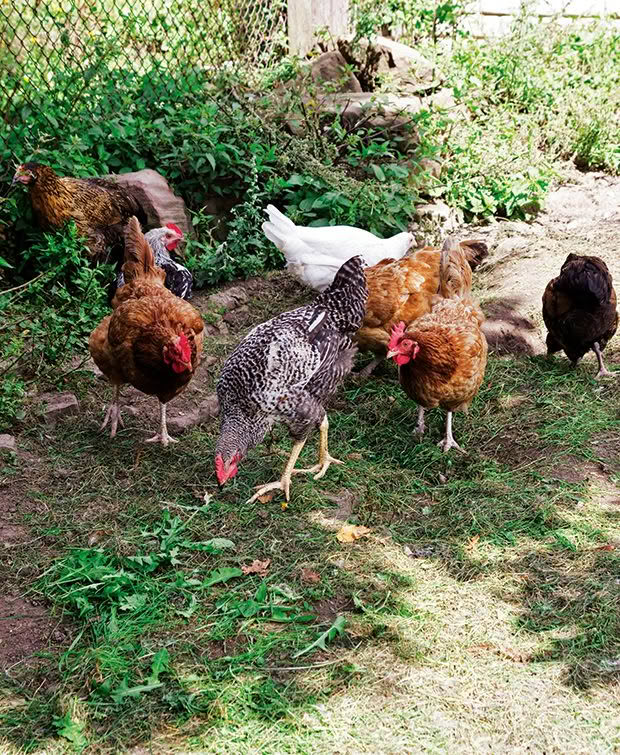
How did we get these fancy heritage chicken breeds? All chickens descended from jungle fowl, predominantly the red jungle fowl from South East Asia, with which they still share most of their genes. The different breeds are a result of selective breeding for a variety of purposes such as religious rituals, cockfighting, egg production and poultry.
The trend for breeding beautiful chickens exploded from about 1840 when the young Queen Victoria became enamoured with the birds. She sent fertile eggs to other European royals, and she and Prince Albert had a royal aviary near Windsor Castle. Royal-gazing being what it was back then, chickens became so fashionable among the middle classes that everyone who was anyone wanted the most beautiful chickens. Prices rocketed in a boom-then-bust economic cycle, both in Britain and North America. The period has been called The Fancy and also Hen Fever, echoing the Tulip Fever that lit up the Netherlands in the seventeenth century and left many tulip bulb speculators out of pocket when the price crashed.
Victorian times were when many of today’s most recognisable heritage breeds came about. The Orpington, for example, was created by crossing Minorcas, Langshans and Plymouth Rocks in the Kent village of Orpington. This was a period when the manipulation of physical traits via selective breeding – natural or human-directed – was being extensively explored and written about by gentlemen naturalists, one of whom was Charles Darwin, who theorised about the jungle fowl origin of the domestic fowl.
Apparently Prince Harry’s son, Archie, has an aviary called Archie’s Chick-Inn filled with rescue hens. “It’s … about getting back to basics,” said Meghan Markle to Oprah Winfrey from her California mansion. Is a new fancy imminent, perhaps?
THE HISTORY OF MODERN HYBRIDS

The modern hybrid layer breeds available in this country are Hy-Line browns and Shaver Browns (brown shavers). They are outstanding layers but relatively scrawny, so are no good for eating. They were developed from the 1940s onwards; before then the what are now known as heritage breeds were all that was available. Simply put, their selection involved crossing the Leghorn, the Rhode Island Red and the Light Sussex.
Crossing the latter two types means the male and female chicks now have different feather colours. This is grotesquely useful to the industry because it means male chicks can be easily identified at hatching and rapidly macerated, and the females kept to lay eggs.
Companies that breed the parent stock of these commercial hybrids select for a number of traits that home chicken keepers can benefit from. These include number and weight of eggs, the quality of the shell and the eggs’ innards, efficiency of feed conversion (the least amount of food in for the greatest number of eggs out) and disease resistance – although vaccinations help as well. When this process started last century, breeding choices were based on outwardly observable characteristics, but modern technologies now allow choices to be based on genetic markers.
Love this story? Subscribe now!
 This article first appeared in NZ Lifestyle Block Magazine.
This article first appeared in NZ Lifestyle Block Magazine.
